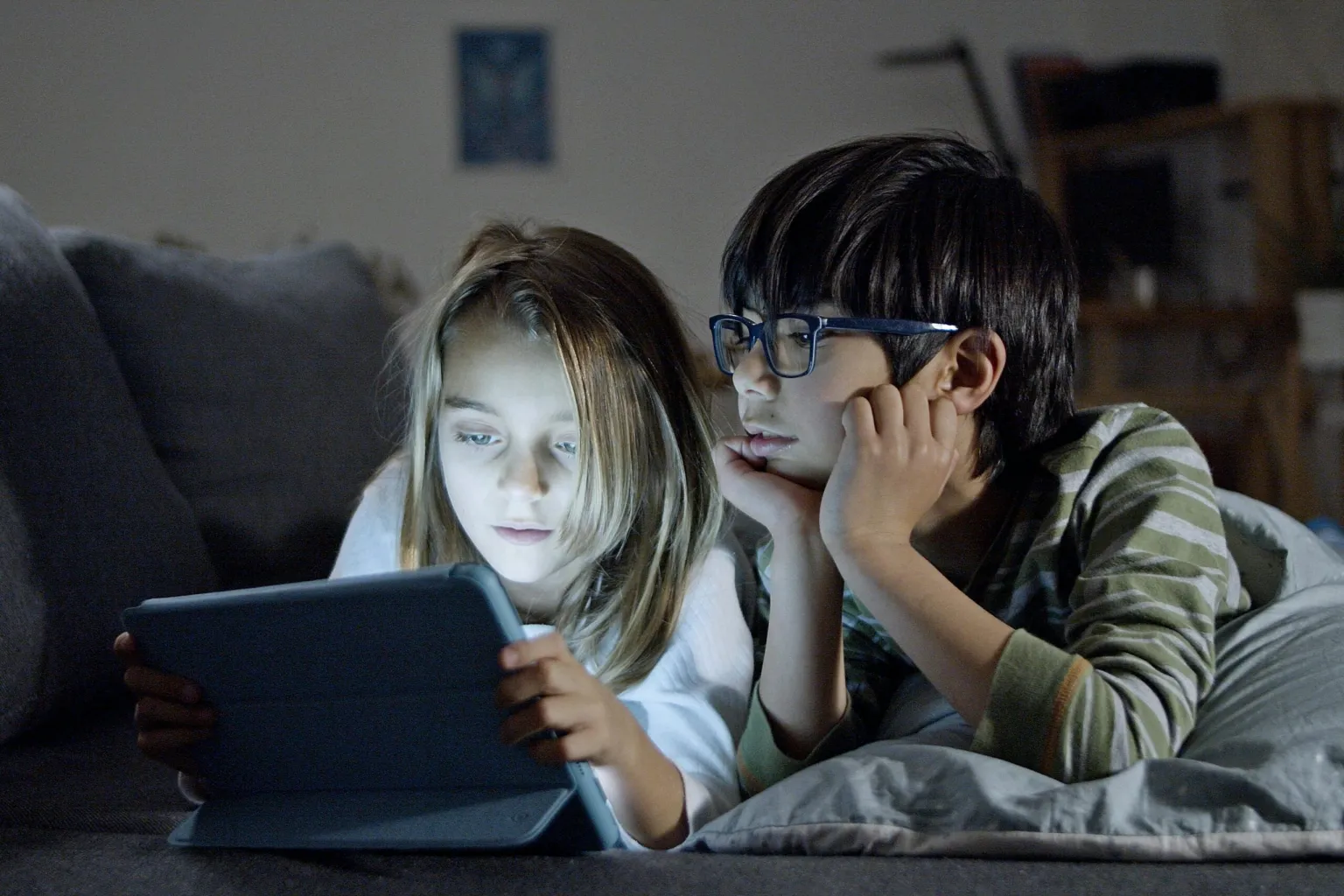How to Deal with Screen Time Addiction in Kids - Setting Healthy Digital Boundaries
- 15 Oct, 2024

In today’s fast-paced digital world, it’s common to see kids glued to screens—whether it’s for gaming, social media, or even online learning. While technology has its benefits, the amount of time kids spend on screens has become a growing concern for many parents. Screen time addiction in kids can lead to a variety of problems, including sleep disruption, behavioral issues, and even developmental delays.
As busy parents, balancing the convenience of digital devices with your child’s overall well-being can be a challenge. In this blog, we’ll explore the practical challenges surrounding screen time addiction and offer realistic strategies to reduce excessive screen use while promoting healthier, more meaningful activities.
The Real Challenges of Screen Time in Today’s Homes
- Screens as the Easy Babysitter
For many working parents, screens can feel like the perfect solution to keep children occupied. Whether you’re on a Zoom call or simply need a few moments to finish chores, it’s easy to hand over a tablet or smartphone.
- Peer Pressure and Digital Socializing
Children, especially tweens and teens, feel intense pressure to stay connected with friends through social media or multiplayer games. This can make it difficult for parents to limit screen time without making their child feel isolated or left out.
- Educational vs. Entertainment Screen Time
While schools increasingly use digital platforms for education, it becomes hard for parents to differentiate between productive screen use (e.g., homework) and non-productive use (e.g., YouTube or gaming).
- Parental Guilt and Overwhelm
Parents today often feel guilty for enforcing too many screen rules, especially when it’s sometimes the easiest option in a busy household. With work, social obligations, and other pressures, setting firm boundaries can feel overwhelming.
The Risks of Excessive Screen Time
Before diving into solutions, let’s quickly look at how screen time addiction in kids can be harmful:
Sleep Issues: The blue light emitted from screens interferes with melatonin production, leading to disrupted sleep patterns.
Behavioral Problems: Excessive screen time has been linked to mood swings, irritability, and decreased attention spans.
Physical Health: Hours spent sitting in front of a screen can result in weight gain, poor posture, and a lack of physical activity.
Social Development: Excessive online interaction can prevent kids from developing critical social skills that come from face-to-face communication.
Practical Solutions for Reducing Screen Time
- Set Clear, Consistent Limits
Create daily or weekly screen time limits based on your child’s age and your family’s needs. For younger kids, aim for no more than 1 hour of recreational screen time per day, while older kids and teens can handle 2-3 hours, excluding homework.
You can use parental control apps like Bark or Qustodio to monitor and set time limits for various devices, which helps you enforce rules without constantly having to remind your kids.
- Introduce a “Screen-Free” Zone
Designate certain areas of the house where screens are not allowed, such as the dinner table, bedrooms, or family rooms during certain hours. This encourages family bonding and eliminates the temptation of devices during important times, like mealtimes or bedtime.
- Encourage Alternative Activities
Sometimes, kids gravitate toward screens because they don’t know what else to do. Create a list of screen-free activities that your child enjoys, such as:
Outdoor play: Invest in fun outdoor toys like a trampoline or basketball hoop to make physical activity exciting.
Arts and crafts: Set up an art station with supplies to fuel their creativity. KiwiCo Crates are excellent subscription boxes that deliver educational and creative projects right to your door.
Family board games: Keep a collection of engaging board games that the entire family can enjoy as an alternative to screens. 4. Model Healthy Screen Behavior
Children are more likely to follow screen limits when they see their parents doing the same. Be conscious of your own screen time habits and try to avoid excessive phone or TV use, especially during family time. Instead, model healthier activities like reading, cooking, or exercising.
- Incorporate Tech Breaks
Introduce tech breaks throughout the day. For example, after 30 minutes of screen time, encourage your child to take a 10-15 minute break to move around, stretch, or engage in a non-screen activity. There are apps like Forest that help kids take breaks and stay focused on more meaningful tasks.
- Use Screen Time for Learning
If your child loves screens, why not use them for learning? Apps like ABCmouse for younger kids or Khan Academy for older kids make learning interactive and fun. This way, screen time can still contribute positively to their development.
- Be Flexible but Firm
It’s important to allow for flexibility, especially if your child is using screens for educational purposes. However, firm boundaries need to be set for entertainment and social media usage. If your child resists, explain the benefits of reducing screen time, such as better sleep, improved mood, and more time for family activities.
Promoting Meaningful, Non-Digital Activities
Here are a few meaningful activities that can easily fit into busy schedules, helping reduce your child’s screen reliance:
Sports and Physical Activities: Consider signing your child up for a sports class, such as soccer or swimming. Physical activities not only reduce screen time but also promote health and teamwork.
Reading Challenges: Create a reading challenge where your child earns rewards for every book they complete. Use affiliate links to recommend educational books or an e-reader like the Amazon Kindle for Kids that promotes reading over casual browsing.
Music or Dance Classes: Engage your child’s creative side with music or dance classes, which provide both physical exercise and a creative outlet.
Chore Challenges: Make chores fun by turning them into games or competitions. This also helps children develop responsibility while cutting down on screen time.
Conclusion: Balance Is Key
Reducing screen time doesn’t mean eliminating it altogether—it’s about finding the right balance that works for your family. By setting clear boundaries, encouraging alternative activities, and modeling healthy screen habits yourself, you can help your child develop a positive relationship with technology while protecting their physical and mental well-being.
Remember, it’s not always easy to enforce these changes, but with consistency and understanding, you’ll be setting healthier digital habits and helping with screen time addiction in kids in the long run. Use tools like parental control apps and encourage non-digital activities to make the process smoother.


